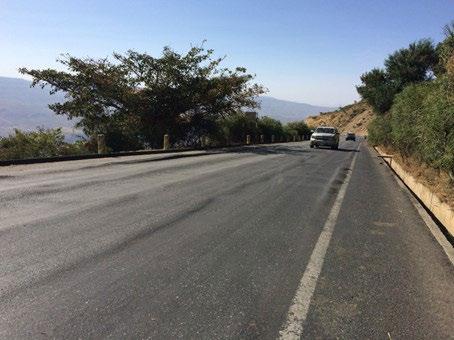
15 minute read
AFRiCAN REFlECTioNS
Our intrepid Dealer Liaison, Don Grimes and partner Kate attended both the Saturday Speedway Championships on 19 March as detailed in Tony’s article and followed that up the next day at the Superbikes at Willowbank - The dirt riders are at the speedway at Banyo. Loved the sidecars fanging about like lunatics! Kate especially loved them (Ed. so a sidecar is on the agenda then Don & Kate...?)
Bitumen track is QLD Raceway Willowbank, this was great too. More speed and control from a spectators perspective. Loved the raging superbikes. But to my surprise I really liked the 300 series. They were very close in bike performance so it was pretty much all down to rider skill. Really close racing, lots of tussle for position. Looking forward to going again soon! Don
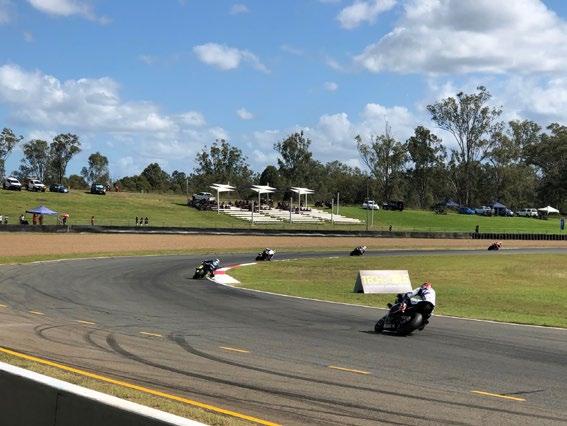





Mystery Weekender - 2022
BMWMCQ PRESENTS The Clubs 2nd longest running weekender...

This is an annual Mystery Weekender that started in 1995 and always held on the last weekend in July somewhere cold. It can be full accomodation, camping or a combination of both. There is always an evening meal together as well as a campfire.
The 30th-31st July 2022 is the date for this years event which will be camping only (details below). It will be a BYO food and Alcohol can be purchased at our lunch stop. The location for lots of laughs and tall stories is always around the traditional camp fire with firewood supplied. It is BYO Breakfast also.
Camping Details: Camping this year will cost $12pp.
The camping area has lots of trees and is level. Amenities with flushing toilets and a small fee for the use of hot showers. This year no payment needs to be made up front. The venue is happy for payment to be made upon arrival. It's a great, quiet location within 2hrs of Brisbane with excellent roads in between. Contact: Gary at gbennett777@gmail.com or reply to the Event on Facebook.

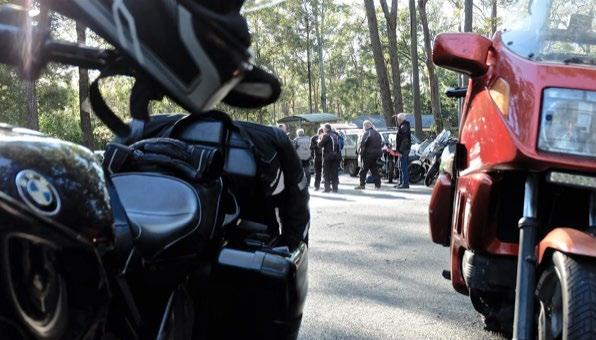

By Duncan Bennett, Member #4171
It is now 5 years since we were coming to the end of our 80 day and 11 countries (not counting our wander into Zambia at Victoria Falls) “C2C” trip. Although I wrote up blog posts for each country down the continent, due to writer’s exhaustion and re-discovery that I had lawns to mow there was never a summary for the BMWMCQ, a highlights package if you will. Little did anyone know that one day I would be co-editor of the BMWMCQ Journal, which allows tedious waffling without any means available to the average member – moral, legal, or lawn related – to stop me. And I never tend to suffer writer’s block, so your last hope is gone as we start a dive down into sub-Saharan Africa.
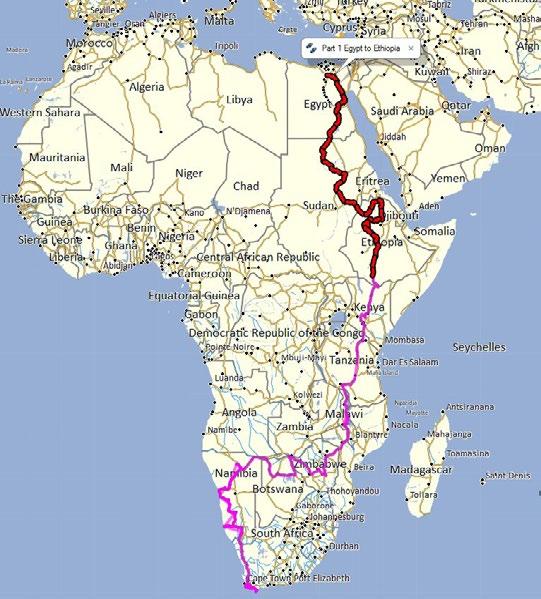
Part 1: Launching off the board Ride Like an Egyptian
A lot of our time in Egypt was spent not motorcycling. The Egyptian bureaucracy seemed a lumpy blend of inefficiency, mild corruption, and downright “frankly my dear, I don’t give an Aswan dam”. So getting the bikes through customs was a marathon while carrying a groin injury, not a sprint. In the meantime we weren’t exactly bored; the Pyramids are truly some of humankind’s most amazing achievements, and to see the site of one of WW2’s most important battles at El Alamein was very moving.

Giza pyramids with Cheop’s 2567BC (MY 2568BC) transit van in the foreground

Australian graves at El Alamein – 3 RAAF, 3 Army
In the lead-up to the C2C we’d been told that the Golden Rule for Africa was we would never ride at night. We broke that Golden Rule on our very first ride experience due to the time it took to get the bikes clear from the Alexandria port workers, with dark descending by the time we’d unloaded the bikes from a truck in an deserted alley full of rubbish, reconnected the batteries and got them ready to ride, and found a servo. We were further delayed by Cindy missing a turn and riding off into the suburban maelstrom, luckily I got the phone to work to explain they’d gone wrong, and she and tail end Mick hailed a taxi to lead them onward to Cairo.
We could only bear to watch others’ bikes being unloaded
We finally got away on Day 1, which was actually Day 6. Initially out to the Red Sea, mostly to avoid the lower Nile, and swinging back into Luxor. This place is carving after 6 espressos per worker, the Karnak Temple at one end, the Luxor Temple at the other with several kilometers of small sphinxes being refurbished in between.
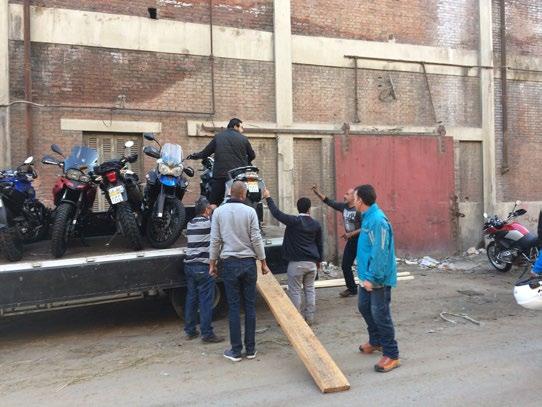
Cindy providing scale for Karnak Temple columns
After Luxor it was down to Aswan via the road that follows the Nile River. Distance is a paltry 285km, so even leaving at lunchtime after a wander through the Valley of Kings it was expected maybe 4 hours. Not even close, it was The Road of One Million Speed Humps, took 7 hours and involved exhausting traffic dodging in the relentless heat. Several pitched battles were conducted against tuk-tuk drivers attempting to pass us then slowing down to check us out, not realising that their fare in the back was now dead or mortally injured having gone over a speed hump at 40kmh. We broke the Golden Rule for the second time in three days and learned why it was a Golden Rule; the concept of the alternator is not understood and Egyptians truly believe their battery will go flat if they drive with their lights on. The arrival at the Aswan hotel was typical Egypt; every piece of paper that has ever existed with your name on it must be produced, and that takes a lot of time. On this occasion we assumed successful check-in would one day happen, so with pressing thirst fronted the bar. The barman asked for our room numbers, but didn’t press the issue when the guests-to-be assembled like an All-Blacks front row demanding beers, and keep ‘em coming.


Cindy looking happy on the road of one million speed humps because she had gone mad
Another fabulous day spent touring Aswan, including a visit to the dam, checking out Egyptian motorcycle police rides, and a cruise out on a felucca boat to Elephantine Island and Nubian Village dinner. The day included a luncheon on a river boat restaurant, with a dessert menu that still confuses me:

Aswan ice-cream. Translation error hopefully.
The final days in Egypt included a visit to the
incredible Abu Simbel Ramesses II temple which was lifted above the dam level in the late 1960’s. Then the ferry over the lake to Sudan.
The Country With No Beer
Our crossing into Sudan was accompanied by a severe dust storm, which made those outside the customs office waiting with the bikes seem a little more African hard-core. Ironically our crossing was on Australia Day, and Sudan is literally a dry country in every respect, so no quiet beers available to bring in No.229. Our first night in Sudan and first in tents was not far down the road in Wadi Halfa, as usual with camping there was a deflating mattress incident resulting in sleeping on a dog’s blanket – hairy and smelly but comfortable.
Sudan border official calling his wife to warn her to bring the washing in. Again.
The travel in Sudan is either along the Nile or cutting across the big bends. Unleaded availability immediately appeared as an issue – there were large numbers of servos but most either had only diesel, or an attendant to tell us that they had no diesel and certainly no petrol. The only sign of petrol was given by tuk-tuks, if they were queued somewhere we’d just join the queue, but that was typically only in larger towns. There are no towns away from the Nile, but our first big bend crossing between Dongola and Karima wasn’t too far so no problems. The resort at Karima was fantastic; not many guests, high quality, and first glance at the drinks menu brought up beer as a quaffing option. It turned out to be zero alcohol beer, but with the very high price and “nearly beer” taste one could smother reality like it was a wealthy old childless aunt and after 3 quiet placebos start to truly believe it was beer. Besides the lack of stimulants, Karima turned out to be one of the absolute highlights of our entire trip, with the deserted Jebal Barkal pyramids right in town and a huge Petrified Forest about 10km away down a true adventure rider’s sandy road.

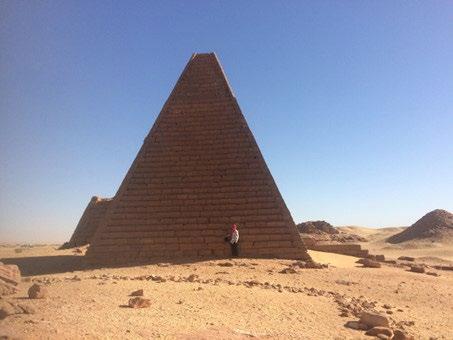
Cindy waiting for the Jebel Barkal Pyramids development Real Estate agent

Acres of stone that looks like wood
More pyramids followed the next day at Meroe which are the tombs of Kushite rulers who were wealthy producers of iron. This meant crossing the big bend of the Nile, some 300km into a howling head wind. Certainly no fuel, so those who hadn’t filled up immediately prior to departure or used a bit much throttle had regrets as they stood on the side of the road watching the still-mobile conservatives roll past. Luckily there was a support vehicle backup.
The Meroe Pyramids were way more touristy than Jebel Barkal, and we even had to avoid local camel owning entrepreneurs who were trying to get
us to mount up for a small fee. Little hope of that with Australians who know that camels smell worse than a dog’s blanket. Onto the capital Khartoum, which was a really nice place and a lot more laid back than Cairo and Alexandria. A feature of Sudan was how nice people were, absolutely no trouble getting help and no money expected.
Teen girls always love a selfie
We did some touristy activities in Khartoum including the museum and the trip to the confluence of the White and Blue Niles, named by someone who was colour challenged; they are both an identical muddy brown. Our last night in Sudan was at a wild camp, albeit fully catered by professionals who brought all the cooking gear and about a tonne of food for one dinner and one breakfast. Suspension creaking, we crossed into Ethiopia in an all-day experience. One of the peculiarities of borders in this part of the world is that people just seem to wander through unless they look as obviously foreign as we do. So we sit about all day while our passports and visas are scrutinised, and doing it all over again for the bikes while watching countless people wandering unfettered around the string barrier between countries.
The Land Where Latte Began
Ethiopia is a country with a population of 90 million people, and all but one of them is out clogging the road network - the President has official engagements which prevents him blindly strolling along and across busy thoroughfares except on weekends. There are three main categories of road user – firstly the pedestrian, often accompanied by goats/sheep/cattle/donkeys, secondly the vehicle user which is mainly restricted to tuk-tuks, trucks, passenger buses, or donkey carts, and thirdly unaccompanied stock. Normal cars are quite rare except in major cities, with the result that petrol can be hard to find, but diesel is everywhere.

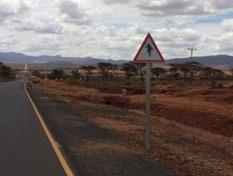

Caution sign: Pedestrians may unexpectedly perform Nutbush City Limits dance
The country is a land of contrasts. Our first few days were in the north up in the very high Simien Mountains which is some of the most spectacularly scenic riding country we’ve ever been in. International aid has built a lot of “still like new” roads which would make sports bike riders
weep with joy. But there is an underlying culture of begging in Ethiopia, and this results in some really negative behaviours with the most negative being “The Chucker”. The Chucker is usually a male preteen, and when they see a motorcycle going past at 60kmh they stand with their hand out hoping for a gift of money or strangely pens. Not getting any, after a few motorcycles have gone past they pick up a rock, or anything nasty to hand, and wait for the next motorcycle so they can throw it. With the huge numbers of people and stock on the road, and knowing that hitting anything is totally your fault, it is a place that can wear you down.
Hunting souvenir sellers in the Simien Mountains
After the Simien Mountains we looped north-east to near the Eritrean border and stayed at Axum, which has a chapel that contains the Ark of the Covenant, which was way easier to find than the ATM in the city. They won’t let anyone in to see the Ark, which according to Exodus 25 is 2½ cubits in length, 1½ in breadth, and 1½ in height, perhaps not coincidentally the same size as a Touratech Zega Pro top box. Another surprise in Axum was when we ordered a dinner and saw someone had left a very second-hand spongy grey wash-cloth on the side of the plate. Turned out not to have come from the bathroom at a homeless man’s shelter, but was actually injera flat bread which we’d never heard of, sour and delicious. Down the scenic country through Mekele, heading south to Woldiya and then west to Lalibela was the plan. Lunches out in the countryside became a huge crowd attraction event, with the locals literally running in from everywhere within a two-kilometre radius, then gathering in a silent crowd while intently watching foreigners tuck into a lunch with all the trimmings. Although the Ethiopians weren’t starving, the villagers certainly appreciated our excess after we were finished. I wish I was joking, but the only fat bloke we saw in Ethiopia was wearing a Collingwood footy jumper.
Cindy giving the thumbs up to the road engineers, most of whom died from stress ulcers
And then disaster; we took the backroad into Lalibela, and an innocuous drainage ditch caused Cindy on the low suspension 700GS Blue Betty to lose control and crash. Straight onto her ankle. We were only 30km from Lalibela so within a short time we were there and into the hotel. Compass support vehicle driver Brendan went calmly into action with the hotel staff – was there a hospital? Yes. Did it have an X-Ray? Maybe. So off we went, found the hospital, confirmed it did have an X-Ray, jammed ourselves with 11 doctors and nurses into a tiny room, inspected the ankle, and then decided an X-Ray was a good idea. For everyone except the radiographer who didn’t seem to understand that a modicum of shielding between the X-Ray and his genitalia was an even better idea. With some recent Lockyer Valley broken ankle experience to hand, we didn’t need an orthopaedic surgeon to give the diagnosis. It was not good. We were 2½ weeks into the 12 week trip. In a normal world 8 weeks for getting back to normal. So practically over by the time Cindy might be back on the bike. The Lalibela staff applied a full leg cast, they didn’t understand that it was an ankle but full marks for effort. Back to the hotel, and a lot of misery that night. So what to do? Send Cindy home? Both home? Worst-case pessimism
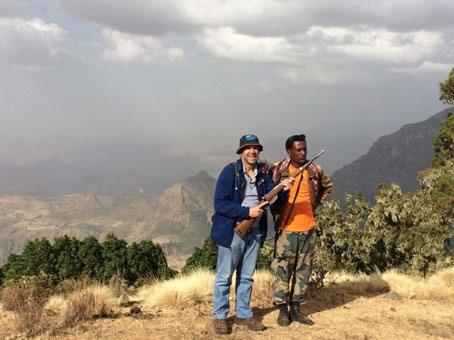

rampant as I am prone to do. Not much we could do immediately, so just go up to dinner and try to keep a stiff upper lip.
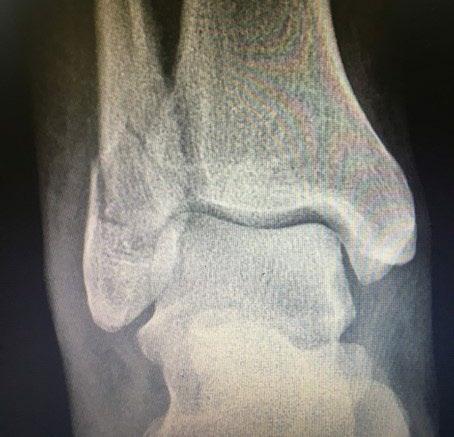
Lalibela Fibula F-Up
It was an emotionally and physically uncomfortable night all around, but then the cold harsh light of a new day gets the activities started. Firstly use the Swiss Army Knife to reduce cast to a more suitable “below the knee” unit. Then go up into town to try to find something that could be used as crutches, we take these for granted in Australia but they don’t exist in regional Ethiopia. Luckily Lalibela is the city of churches, the services drag on for hours, and there are no pews. So church-goers use things that look like crutches to lean on, rather than fall down. Two thanks, and we’ll use aforementioned Swiss Army Knife wood saw to cut them to size. A bit of butchering of Cindy’s motorcycle pants hip pads, heaps of tape, and done. With Cindy in the support truck or being carried about by enthusiastic helpers or using the dodgy crutches, we still managed to do some sightseeing activities and see our first hippopotami on the way down to Addis Ababa. It became difficult for Cindy in the crowd swarms, the instant we’d stop people would just come from everywhere. If she wanted to go to the loo behind a tree, it was under the gaze of a lot of people, like I said Ethiopia was a place that could wear you down.
Cindy’s Supercheap Wheel Chair and crutches
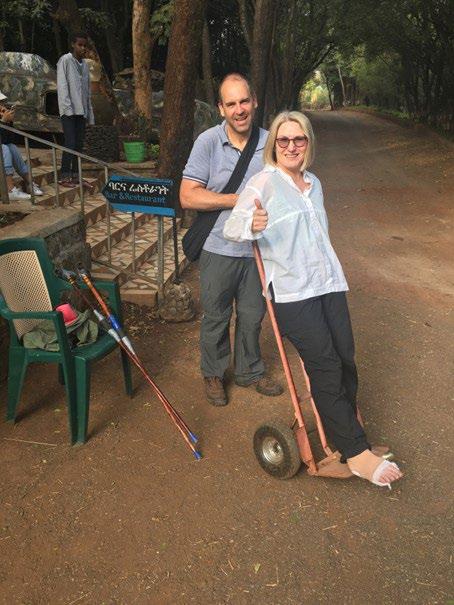
Bitumen ruts on the road into the Blue Nile Valley
Roads were generally atrocious as the traffic built up closer to the capital – pot holes that could swallow a VW, bitumen ruts; the number of crashed trucks were a good KPI for road conditions. Then into the Blue Nile Valley and it got worse – riding along and going into some of the pot-holes was like Evel Knievel’s attempt to jump 14 Greyhound buses – staying on only through bloody good luck.
